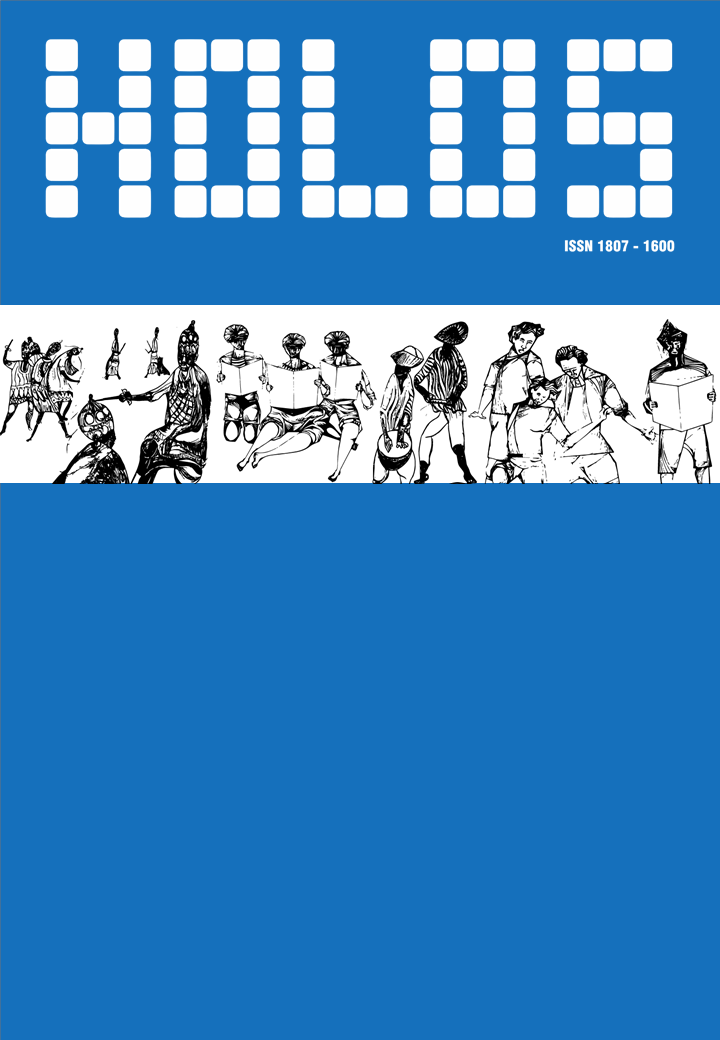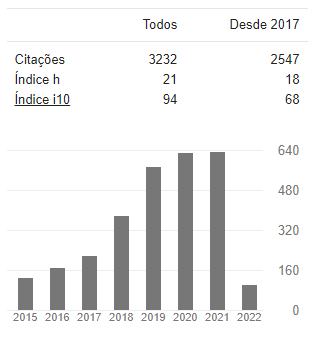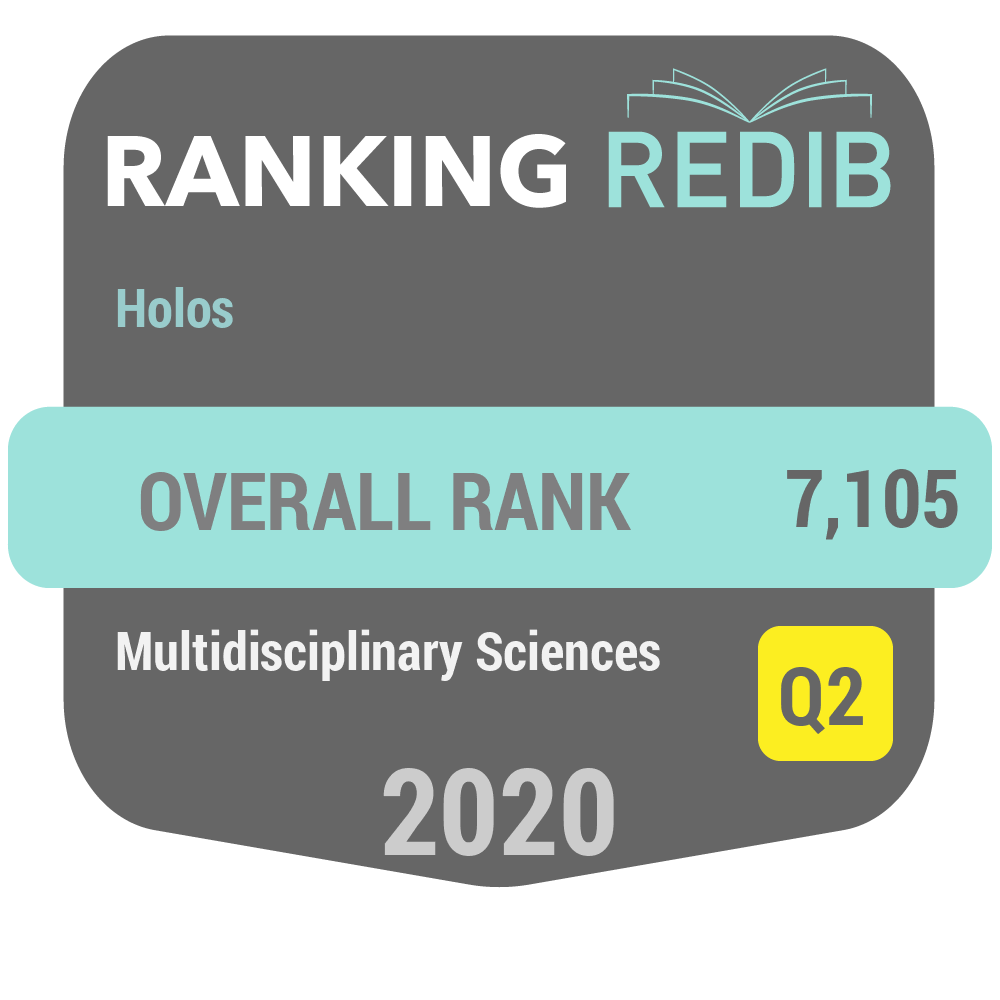USE OF DEEP LEARNING TO DIAGNOSE COVID-19 BASED ON COMPUTED TOMOGRAPHY IMAGES
DOI:
https://doi.org/10.15628/holos.2021.11054Palavras-chave:
Convolutional Neural Network, Transfer Learning, COVID-19, Tomography, Dataset.Resumo
The newly identified Coronavirus pneumonia, later called COVID-19, is highly transmissible and pathogenic. The most common symptoms of this disease are dry cough, sore throat, and fever. Symptoms can progress to a severe form of pneumonia with critical complications, including septic shock, pulmonary edema, acute respiratory distress syndrome, and multiple organ failure. A major obstacle in controlling the spread of this disease is the inefficiency and scarcity of medical tests. Increasing efforts have been made to develop deep learning (DL) methods to diagnose COVID-19 based on tomography images. These computer-aided diagnostic systems can assist in the early detection of abnormalities in COVID-19 and facilitate the monitoring of disease progression, potentially reducing mortality rates. In this study, we compared the popular resource extraction structures based on deep learning for the automatic classification of COVID-19. To obtain a more precise method, which is an essential learning component, a set of deep convolutional neural networks (CNN) was chosen to train our model. The performance of the proposed method was validated using a COVID-19 dataset with computed tomography (CT) images. This dataset is available to the public and contains hundreds of positive CT scans for the disease. DL methods were performed and the best classified CNN was able to achieve excellent diagnostic results for COVID-19.Downloads
Referências
Abadi M, Agarwal A, Barham P, Brevdo E, Chen Z, Citro C, Corrado G, Davis A, Dean J, Devin M, Ghemawat S, Goodfellow I, Harp A, Irving G, Isard M, Jia Y, Jozelowicz R, Kaiser L, Kudlur M, Levenberg J, Mane D, Monga R, Moore S, Murray D, Olah C, Schuster M, Shlens J, Steiner B, Sutskever I, Talwar K, Tucker P, Vanhoucke V, Vasudevan V, Viegas F, Vinyals O, Warden P, Wattenberg M, Wicke M, Yu Y, Zheng X. (2015). TensorFlow: Large-scale machine learning on heterogeneous systems. Disponível em: http://tensorflow.org. Acesso em: 14 de junho 2020.
Bernheim A, Mei X, Huang M, Yang Y, Fayad Z, Zhang N, Diao K, Lin B, Zhu X, Li K. (2020). Chest ct findings in coronavirus disease-19 (covid-19): relationship to duration of infection, Radiology, p. 200463.
Chityala R, Pudipeddi S. (2020). Convolutional Neural Network. Image Processing and Acquisition using Python, 2nd Edition. 10.1201/9780429243370-12.
Cohen J, Morrison P, Dao L. (2020). Covid-19 image data collection. 2003.11597 arXiv. Available in: https://github.com/ieee8023/covid-chestxray-dataset. Accessed: June 13, 2020.
Cowan IA, MacDonald SL, Floyd RA. (2013). Measuring and managing radiologist workload: measuring radiologist reporting times using data from a Radiology Information System. J Med Imaging Radiat Oncol. Oct;57(5):558-66. doi: 10.1111/1754-9485.12092. Epub 2013 Jul 12. PMID: 24119269.
Deng J, Dong W, Socher R. (2009). ImageNet: a LargeScale Hierarchical Image Database. IEEE Computer Society Conference on Computer Vision and Pattern Recognition.
Gozes O, Fr-adar M, Greenspan H, Browning P, Zhang H, Ji W, Bernheim A, Siegel E. (2020). Rapid ai development cycle for the coronavirus (covid-19) pandemic: Initial results for automated detection & patient monitoring using deep learning ct image analysis, arXiv preprint arXiv:2003.05037.
Grand Challenge. (2020). CT diagnosis of COVID-19. Grand challenges in biomedical image analysis. Available in: https://covid-ct.grand-challenge.org. Accessed: 09 July 2020.
Hall L, Paul R, Goldgol D, Goldgof G. (2020). Finding covid-19 from chest x-rays using deep learning on a small dataset. ArXiv preprint arXiv:2004.02060.
He K, Zhang X, Ren S, Sun J. (2016). Deep residual learning for image recognition. In Proceedings of the IEEE conference on computer vision and pattern recognition, pp. 770–778.
Hemdan E, Shouman M, Karar M. (2020). Covidx-net: A framework of deep learning classifiers to diagnose covid-19 in x-ray images. arXiv preprint arXiv:2003.11055.
Howard A, Zhu M, Chen B, Kalenichenko D, Wang W, Weyand T, Andreetto M, Adam H. (2017). Mobilenets: Efficient convolutional neural networks for mobile vision applications. ArXiv:1704.04861.
Huang G, Liu Z, Van Der Maaten L, Weinberger K. (2017). Densely connected convolutional networks. In Proceedings of the IEEE conference on computer vision and pattern recognition, pp. 4700–4708.
Jakubovitz D, Rodrigues M, Giryes R. (2019). Lautum Regularization for Semi-supervised Transfer Learning. arXiv:1904.01670.
Kang E, Min J, Ye J. (2017). A deep convolutional neural network using directional wavelets for low-dose X-ray CT reconstruction. Med Phys;44:e360-75.
Keras Team. (2018). Keras Applications: Reference implementations of popular deep learning models. Github. Available in: https://github.com/keras-team/keras-applications. Accessed: June 14, 2020.
Krizhevsky A, Sutskever I, Hinton G. (2012). Imagenet classification with deep convolutional neural networks, in: Advances in neural information processing systems, pp. 1097–1105.
Li Z, Li L. (2017). A novel method for lung masses detection and location based on deep learning, IEEE International Conference on Bioinformatics and Biomedicine (BIBM).
Morocho-Cayamcela M, Lim W. (2019). Fine-tuning a pre-trained Convolutional Neural Network Model to translate American Sign Language in Real-time, 10.1109/ICCNC.2019.8685536.
Peng Z, Xinnan X, Hongwei W. (2018). Computer-Aided Lung Cancer Diagnosis Approaches Based on Deep Learning. J Comput Aided Design Comput Graph;30:90.
Rosebrock A. (2020). Detecting COVID-19 in X-ray images with Keras, TensorFlow, and Deep Learning. Available in: https://n9.cl/hwdr0. Accessed: June 13, 2020.
Rosebrock A. (2019). Fine-tuning with keras and deep learning. Available in: https://n9.cl/pzdp. Accessed: August 5, 2020.
Simonyan K, Zisserman A. (2014). Very deep convolutional networks for large-scale image recognition. In ICLR. arXiv 1409.1556.
Song Q, Zhao L, Luo X. (2017). Using Deep Learning for Classification of Lung Nodules on Computed Tomography Images. J Healthc Eng:8314740.
Sun W, Zheng B, Qian W. (2016). Computer aided lung cancer diagnosis with deep learning algorithms. SPIE Medical Imaging. Medical Imaging 2016: Computer-Aided Diagnosis.
Shabbeer Basha S, Dubey SR, Pulabaigari V, Mukherjee S. (2019). Impact of Fully Connected Layers on Performance of Convolutional Neural Networks for Image Classification. Neurocomputing. 378. 10.1016/j.neucom.2019.10.008.
Voigtman, Edward. (2017). Receiver Operating Characteristics. 10.1002/9781119189008.ch6. Accessed: July 1, 2020.
Xinhua. Virus-hit Wuhan speeds up diagnosis of patients. Available in: https://n9.cl/wlix. Accessed: June 18, 2020.
Yamashita R, Nishio M, Do R, Togashi K. (2018). Convolutional neural networks: an overview and application in radiology. Insights into Imaging.
Zhao J, He X, Yang X, Zhang Y, Zhang S, Xie P. (2020). COVID-CT-Dataset: A CT Scan Dataset about COVID-19. 2003 arXiv.13865. Available in: https://github.com/UCSD-AI4H/COVID-CT. Accessed: June 25, 2020.
Zoph B, Vasudevan V, Shlens J, Le Q. (2017). Learning transferable architectures for scalable image recognition. ArXiv: 1707.07012.









































